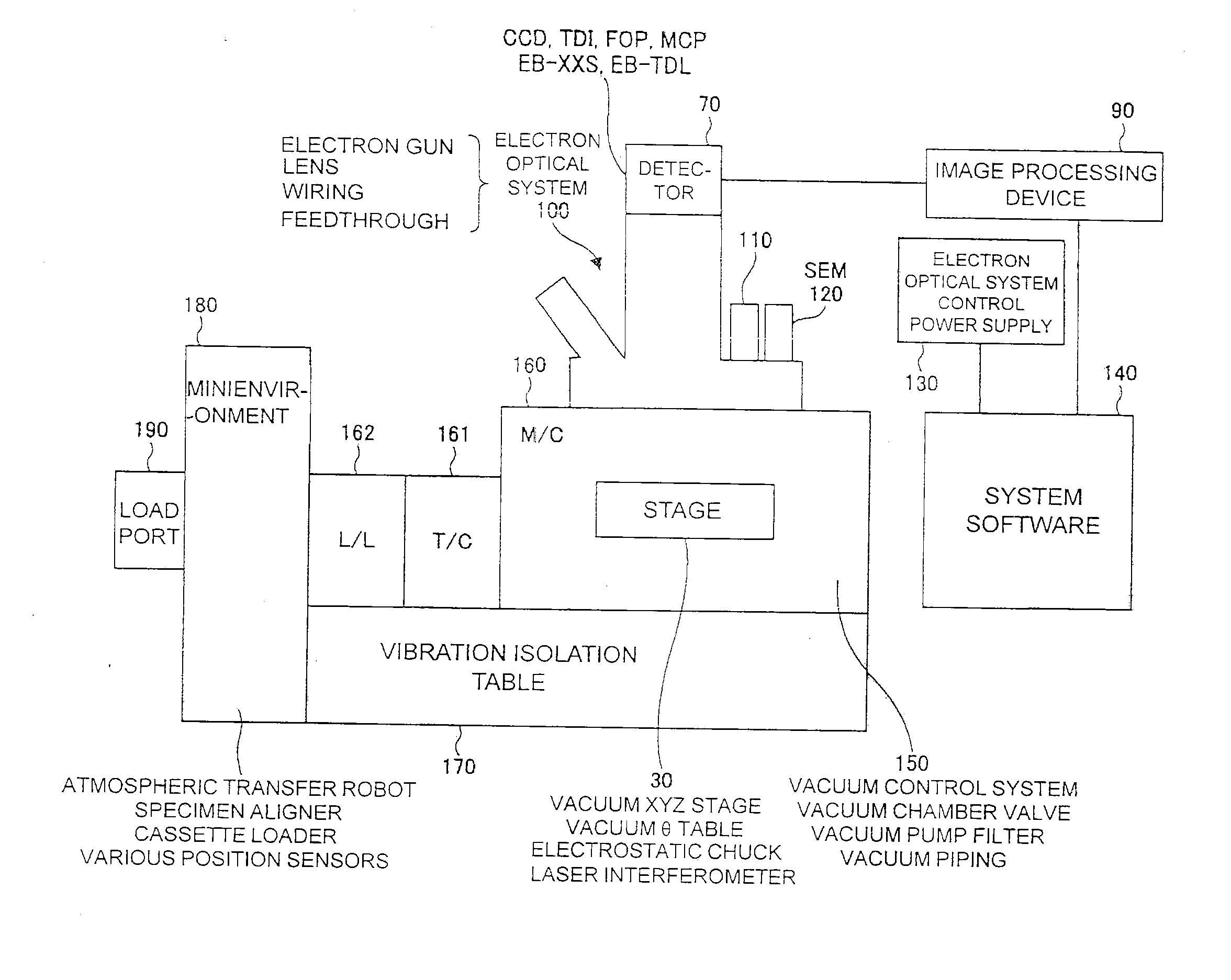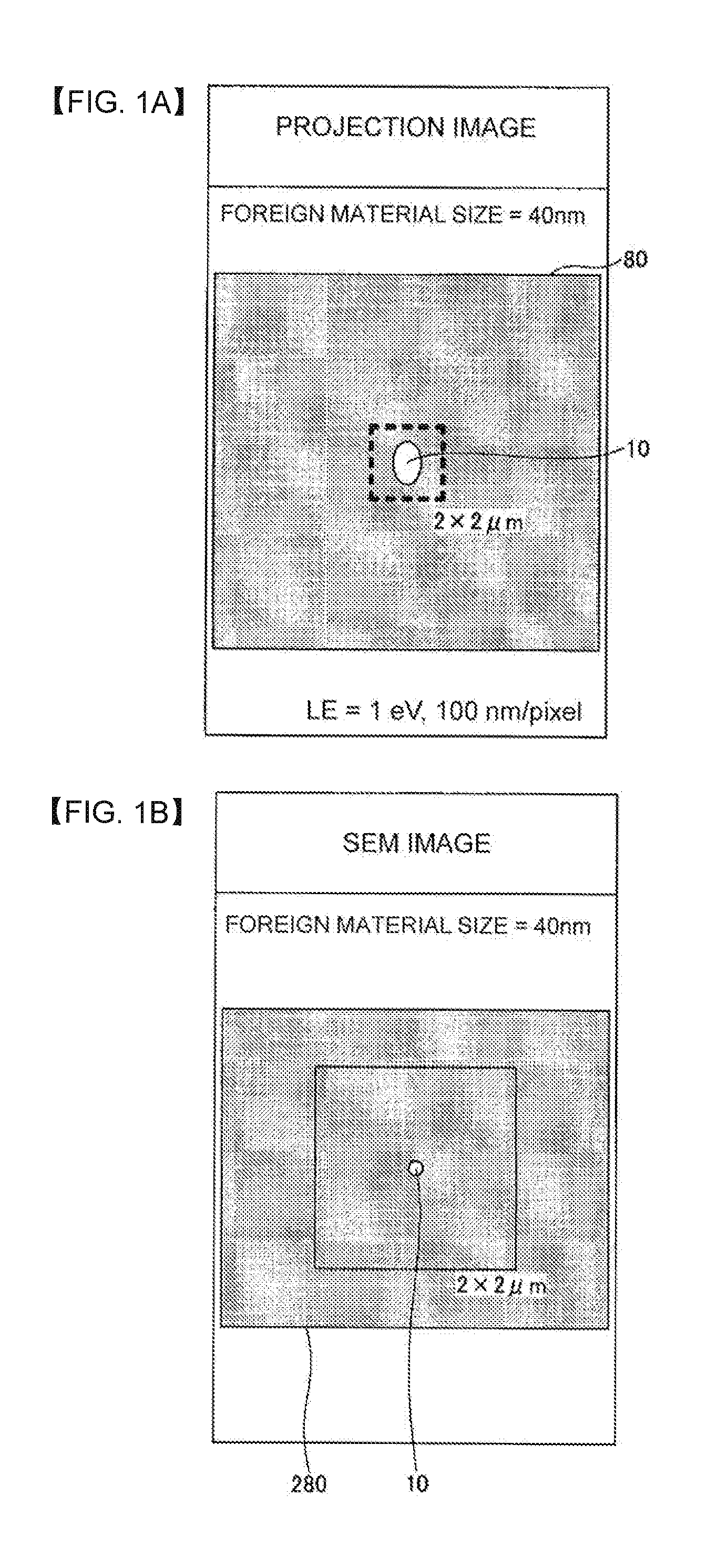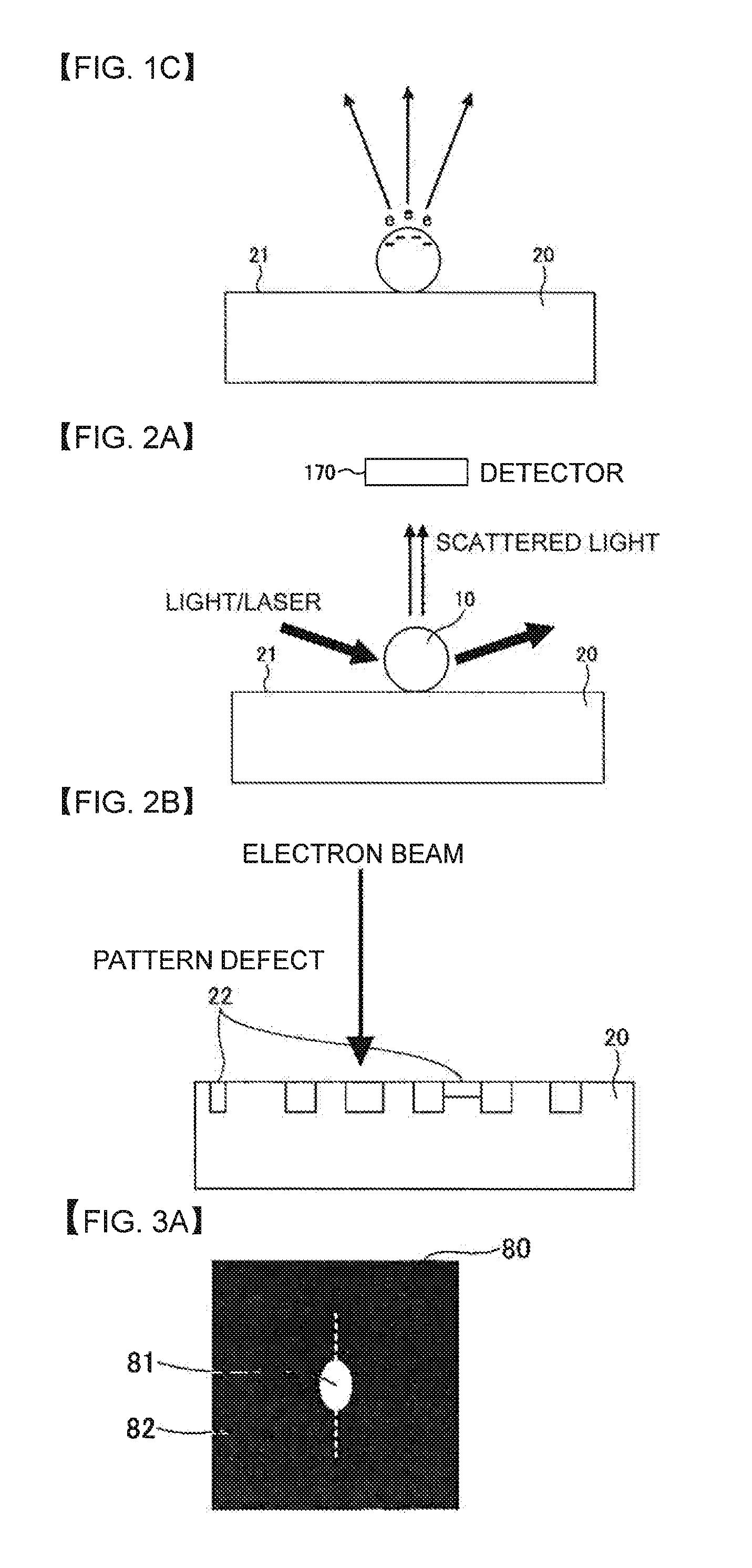Specimen observation method and device, and inspection method and device using the method and device
a technology of observation method and specimen, applied in the direction of material analysis using wave/particle radiation, semiconductor/solid-state device testing/measurement, instruments, etc., can solve the problems of insufficient resolution of conventional optical microscopes, inability to observe fine objects, and immense observation time, so as to improve the ability to observe specimens.
- Summary
- Abstract
- Description
- Claims
- Application Information
AI Technical Summary
Problems solved by technology
Method used
Image
Examples
experiment example 1
[0477]FIGS. 41A and 41B show a structure of the specimen 1200 to be observed in Experiment example 1 and an example of an acquired image. FIG. 41A shows a cross-sectional structure of a contact plug which is the specimen 1200. FIG. 41B shows an example of an acquired image of the specimen surface 1201 having the contact plug structure.
[0478]In FIG. 41A, the insulating area 1203 and the conductive area 1202 are formed on a semiconductor substrate, silicone substrate 1205. The insulating area 1203 is formed of SiO2. The conductive area 1202 is formed of a tungsten material and has a contact-plug shape. The planar structure of the specimen surface 1201 is based on the insulating area 1203, and the conductive area 1202 is formed in the base as a spot or circle.
[0479]FIG. 41B is an example of an image of the specimen surface 1201 acquired in a specimen observation, where the insulating area 1203 is the black base part of the image. The white circular conductive area 1202 is isolated from...
experiment example 2
[0488]FIGS. 43A and 43B show a measurement result of Experiment example 2. FIG. 43A is a table of a measurement result showing a correlation between the dose amount of the charging electron beam and the contrast. FIG. 43B is a graph of the measurement result in FIG. 43A. Various setting conditions of the specimen observation device and the specimen 1200 to be measured are the same as those of Experiment example 1, and will not be described.
[0489]In Experiment example 2, the specimen surface 1201 was irradiated with the charging electron beam, and then the specimen surface 1201 was imaged. As shown in FIGS. 43A and 43B, when the advance irradiation was performed with the charging electron beam with 1 mC / cm2 or more before the imaging, the contrast was 0.8 or more and a stable contrast was obtained. That is, when the dose amount of the charging electron beam was 1 mC / cm2 or more, the charge in the insulating area 1203 on the specimen surface 1201 was saturated to cause a negative pote...
experiment example 3
[0490]FIGS. 44A and 44B show a measurement result of Experiment example 3. FIG. 44A is a table of a measurement result showing a correlation between the position of the NA adjustment aperture 1060 and the contrast. FIG. 44B is a graph of the measurement result in FIG. 44A. Various setting conditions of the specimen observation device and the specimen 1200 to be measured are the same as those of Experiment example 1, and will not be described.
[0491]In FIGS. 44A and 44B, the measurement was made with the position of the NA aperture 1061 of the NA adjustment aperture 1060 being adjusted. As a result, a maximum contrast of 0.8 was obtained when the aperture position was at the center position, 0 μm. This means that the electrons ec which have obtained structural information on the conductive area 1202 can be made to go through most when the center of NA aperture 1061 of the NA adjustment aperture 1060 coincides with the optical axis. In accordance with a movement of the NA adjustment ap...
PUM
| Property | Measurement | Unit |
|---|---|---|
| landing energy | aaaaa | aaaaa |
| sizes | aaaaa | aaaaa |
| collision energy | aaaaa | aaaaa |
Abstract
Description
Claims
Application Information
 Login to View More
Login to View More - R&D
- Intellectual Property
- Life Sciences
- Materials
- Tech Scout
- Unparalleled Data Quality
- Higher Quality Content
- 60% Fewer Hallucinations
Browse by: Latest US Patents, China's latest patents, Technical Efficacy Thesaurus, Application Domain, Technology Topic, Popular Technical Reports.
© 2025 PatSnap. All rights reserved.Legal|Privacy policy|Modern Slavery Act Transparency Statement|Sitemap|About US| Contact US: help@patsnap.com



